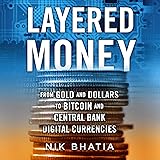A senior advisor to Russian President Vladimir Putin, Anton Kobyakov, recently made headlines with a startling claim: the United States is preparing to use a novel crypto scheme to effectively erase its massive national debt. As highlighted in the accompanying video, Kobyakov suggests this isn’t just a speculative theory but a calculated move, drawing parallels to previous periods of significant monetary shifts in American history. This assertion, made at the Eastern Economic Forum in Vladivostok, warrants a deeper look into the context, the proposed mechanisms, and the potential global ramifications of such an audacious strategy, especially given the US national debt now surpasses an astounding $37 trillion.
The Alarming Trajectory of US National Debt
The sheer scale of the United States’ national debt is a figure that consistently grabs attention, and for good reason. US Treasury data confirms that the nation’s debt currently stands at over $37 trillion, a staggering sum that has seen rapid acceleration in recent years. To put this into perspective, just a decade ago, this figure was $18.15 trillion, meaning it has more than doubled in that timeframe. Looking back further, the nation has experienced an almost 10-fold increase in its debt since 1981, illustrating a persistent trend of rising financial obligations.
This escalating debt isn’t merely an abstract number; it represents the accumulation of annual budget deficits, where government spending outpaces revenue. The implications of such a colossal debt are far-reaching, impacting everything from national interest payments to the potential for future economic growth. Critics argue that an unsustainable debt trajectory could lead to inflationary pressures, higher taxes, or reduced public services in the long run. Understanding this context is crucial when evaluating claims about any drastic measures, such as a “US crypto scheme to erase debt,” that might be contemplated to address this fiscal challenge.
Decoding Kobyakov’s Bold Allegations
Anton Kobyakov’s theory posits that the US intends to leverage the burgeoning cryptocurrency market as a tool to restructure, or even effectively wipe out, its $35 trillion (his estimate) national debt. He argues that the US is actively attempting to “rewrite the rules” governing the gold and cryptocurrency markets, viewing these as critical alternatives to the traditional global currency system. Imagine a scenario where the foundational principles of global finance are deliberately altered to serve a national interest; this is the essence of Kobyakov’s warning.
Central to his claim is the idea of shifting the existing national debt into USD stablecoins, a move he believes would ultimately devalue it. Stablecoins are cryptocurrencies designed to maintain a stable value, typically pegged to a fiat currency like the US dollar. If a significant portion of the national debt were converted into these digital assets, Kobyakov suggests it could shrink the actual burden, allowing the US to “start from scratch.” He ominously refers to this potential outcome as pushing the world into a “crypto cloud,” implying a state of economic uncertainty and unprecedented digital financial dependency. Such a maneuver, if feasible, would represent a profound redefinition of national solvency and international financial obligations.
Echoes from the Past: US Monetary History and Resets
Kobyakov’s claims are not presented in a historical vacuum; he draws direct parallels to two earlier periods of significant monetary resets in US history. This historical context adds a layer of gravity and plausibility to his otherwise radical assertions. The first parallel is the 1930s, during the Great Depression, when the US government took extraordinary steps to combat the economic crisis. In 1933, President Franklin D. Roosevelt issued Executive Order 6102, requiring Americans to deliver all gold coins, bullion, and certificates to the Federal Reserve in exchange for paper money, effectively devaluing the dollar against gold.
The second historical comparison points to President Nixon’s pivotal decision in the 1970s. In 1971, Nixon unilaterally ended the dollar’s direct convertibility to gold, effectively dismantling the Bretton Woods system. This move detached the dollar from its final physical link to gold, allowing the US to print more money without being constrained by gold reserves. Kobyakov argues that, much like in the 1930s and 1970s, the US now plans to address its financial challenges “at the world’s expense,” using modern tools like cryptocurrency to achieve an old goal. These historical precedents suggest a willingness by the US to implement unconventional monetary policies when faced with severe economic pressures, lending some weight to the idea of a potential “US crypto scheme to erase debt.”
The Bitcoin and Stablecoin Nexus: Proposed Solutions and Debates
While Kobyakov’s claims are highly speculative, they resonate against a backdrop of increasing discussions within US political circles about the role of digital assets in national finance. The idea of holding cryptocurrencies as part of national reserves or integrating them into financial strategies has gained traction among some policymakers. For example, Senator Cynthia Lummis, a vocal proponent of Bitcoin, stated in May that Bitcoin could be “the only solution” to the US’s mounting debt, which she estimated at $36 trillion. She has actively promoted the BITCOIN Act, a legislative proposal that would urge the government to purchase 1 million Bitcoin over five years and hold it for two decades, seeing it as a long-term asset to hedge against traditional currency inflation.
Beyond Bitcoin, stablecoins are also central to the discourse, particularly in the context of maintaining the USD’s dominance. US officials often assert that the development of a robust stablecoin framework is aimed at ensuring the dollar remains the world’s leading currency in the digital age. Scott Bessent, a supporter of the GENUINE bill, has claimed that stablecoins could help reduce the national debt by increasing demand for US Treasuries, which are government bonds. However, this perspective is not universally accepted. A counter-argument suggests that increased demand for Treasuries due to stablecoin integration could actually lead to more debt issuance, potentially exacerbating the national debt rather than alleviating it. This highlights a fundamental debate within financial policy circles about the true impact of digital assets on national solvency and the viability of any “US crypto scheme to erase debt.”
Global Implications and the Future of the Dollar
The notion of the US attempting to solve its financial problems “at the world’s expense” carries significant geopolitical weight. If the US were to pursue a strategy involving the devaluation of its debt through a crypto mechanism, the ripple effects would be felt across the global economy. The US dollar currently serves as the world’s primary reserve currency, meaning many international transactions, commodities, and national reserves are denominated in USD. A deliberate devaluation could severely impact other nations holding significant dollar reserves, leading to a loss of confidence in the dollar and potentially triggering a shift towards alternative currencies or assets.
Imagine if major economies suddenly found their dollar holdings significantly diminished in value; this could ignite an international financial crisis and fundamentally alter global power dynamics. Kobyakov’s “crypto cloud” metaphor evokes a future where traditional economic predictability is replaced by a volatile, digitally-driven financial landscape. Such a drastic “US crypto scheme to erase debt” would undoubtedly prompt other countries to accelerate their own digital currency initiatives and re-evaluate their reliance on the dollar. The debate around these possibilities underscores the profound implications of cryptocurrency not just as a technological innovation, but as a potential instrument of national economic strategy with global consequences.







